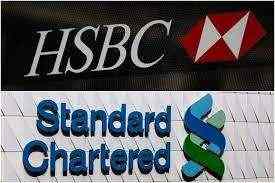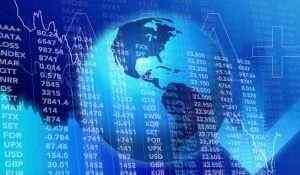

On March 28, 2013, the index surpassed its closing high of 1,565.15, recovering all its losses from the Great Recession. On April 10, 2013, it closed above the intraday high from 2007. On April 14, 2010, the index closed at 1,210.65, its first close above 1,200 since the financial crisis of 2007–2008. By July 2, 2010, it had fallen to 1,022.58, its lowest point of the year. On January 22, 1993, the Standard & Poor’s Depositary Receipts exchange-traded fund issued by State Street Corporation began trading. Beginning in 1986, the index value was updated every 15 seconds, or 1,559 times per trading day, with price updates disseminated by Reuters.
Fortunately, the total market cap for the S&P 500 as well as the market caps of individual companies are published frequently on financial websites, saving investors the need to calculate them. In order to be included in the S&P 500 Index, a company must be publicly traded and based in the United States. It also needs to meet certain requirements for liquidity and market capitalization, have a public float of at least 10% of its shares, and have positive earnings over the trailing four quarters. The S&P is a float-weighted index, meaning the market capitalizations of the companies in the index are adjusted by the number of shares available for public trading.
Bloomberg New Economy Forum: Lighting a Path Through the Storm
For example, if Apple’s market cap is $2 trillion and the total market cap of the S&P 500 is $30 trillion, this would equate to around a 6.6% weighting for the constituent company. The listing for the S&P 500 is dependent on a few strict criteria, meaning that a company’s eligibility by market cap does not necessarily mean automatic entry to the index. As well as market cap, the listing criteria also take into account factors such as organisational structure, share type and liquidity, and the proportion of shares available to the public. The S&P 500 is a benchmark stock index comprising of around 500 of the largest US companies ranked by market cap. A capitalization-weighted index is a type of market index whose individual equity components have varying impacts based on their market capitalization. The Russell Small Cap Completeness Index is a market capitalization-weighted index comprised of Russell 3000 stocks excluded from the S&P 500 Index.

The S&P 500 Index is one of the most widely-used indexes for the U.S. stock market. These 500 companies represent the largest and most liquid companies in the U.S., from technology and software companies to banks and manufacturers. Although the index is created by a private company, the S&P 500 is now a popular yardstick for the performance of the market economy at large. The S&P 500 total market cap is approximately $35.00 trillion as of Feb. 28, 2023, which is the sum of the market caps for all of the stocks in the index. A company’s rising market cap isn’t necessarily indicative of a company’s fundamentals so much as it reflects the stock’s increase in value relative to shares outstanding.
If the price of the S&P 500 is increasing, it means that a specific company or group of companies are experiencing gains, which is reflected in the price of the overall index. Conversely, if the S&P 500 price is falling, it means that companies on the index are experiencing a decline in price. «S&P 500 tumbles from record finish to correction in just 6 trading days as stock-market rout accelerates».
Business
You can’t directly invest in the S&P 500 because it’s an index, but you can invest in one of the many funds that use it as a benchmark, tracking its composition and performance. Because of its depth and diversity, the S&P 500 is widely considered one of the best gauges of large U.S. stocks, and even the entire equities market. «S&P 500 rises to a record close, fully wiping out its coronavirus losses». «Nasdaq closes above 5K for first time since March 2000; Dow, S&P at records». The index rose 13% in 2012 despite significant volatility amid electoral and fiscal uncertainty and round 3 of quantitative easing.
However, this was followed by a 20% gain in the second quarter, its biggest quarterly gain since 1998. In the following months the index reached several all-time highs. On April 1, 2021, the index closed above 4,000 for the first time. The S&P only uses free-floating shares when calculating market cap, meaning the shares that the public can trade. The S&P adjusts each company’s market cap to compensate for new share issues or company mergers. The value of the index is calculated by totaling the adjusted market caps of each company and dividing the result by a divisor.

However, the index has made new highs on only 5% of trading days, meaning that on 95% of trading days, the index has closed below its all-time high. On March 23, 2020, at the trough of the 2020 stock market crash, the index had fallen 34% from its peak. Overall, the index fell 20% during the first quarter of 2020, its worst quarter since 2008.
For example, Apple is considerably more capable of causing changes in the S&P 500 price than Intel. Risk-return tradeoff is a fundamental trading principle describing the inverse relationship between investment risk and investment return. The offers that appear in this table are from partnerships from which Investopedia receives compensation. Investopedia does not include all offers available in the marketplace.
Alternatively, stocks on the S&P 500 can naturally be traded individually, offering an opportunity to focus on particular sectors of interest. S&P 500 options are contracts that give you the right, but not the obligation, to buy or sell the index at a set price on a set date. As mentioned, companies that are weighted the highest in the index are more capable of moving the index than smaller constituents.
On August 31, 1976, The Vanguard Group offered the first mutual fund to retail investors that tracked the index. On Monday, March 4, 1957, the index was expanded to its current 500 companies and was renamed the S&P 500 Stock Composite Index.
S&P 500 vs. Nasdaq
In this way, the fund barely deviates from the S&P, which it is designed to mimic. However, there are two large differences between the construction of the S&P and Russell families of indexes. First, Standard & Poor’s chooses constituent companies via a committee, while Russell indexes use a formula to choose stocks to include. Second, there is no name overlap within S&P style indices , while Russell indexes will include the same company in both the «value» and «growth» style indexes. However, you can calculate a company’s weighting in the index, which can provide investors with valuable information. If a stock rises or falls, you can get a sense as to whether it might have an impact on the overall index.
What does the S&P 500 price mean?
For example, a company with a 10% weighting will have a greater impact on the value of the index than a company with a 2% weighting. Determining the weighting of each component of the S&P 500 begins with adding up the total market cap for the index by adding together the market cap of every company in the index. The S&P 500 Index, or Standard & Poor’s 500 Index, is a market-capitalization-weighted index of 500 leading publicly traded companies in the U.S. The price of the S&P 500 indicates whether the share prices of the companies on the index are rising or falling.
S&P 500 Index: What It’s for and Why It’s Important in Investing
The Russell 1000 Index, a subset of the Russell 3000 Index, represents the 1000 top companies by market capitalization in the United States. Apple Inc. reported 15.94 billion shares outstanding in their Feb. 2023 annual filing for the quarter ending Dec. 31, 2022, and had a stock price of $157.40 as of March 20, 2023. As a result, equal-weighted indexes have become increasingly popular whereby each company’s stock price movements have an equal impact on the index. The weighting of each company in the index is calculated by taking the company’s market cap and dividing it by the total market cap of the index. When Federal Reserve monetary policy is accommodative, interest rates tend to fall and the general money supply and credit opportunities increase. This means corporate debt becomes more attractive to obtain and cheaper to service, creating the potential for business growth and often boosting stock prices in turn.
The simplest way to invest in the S&P 500 Index is to buy shares of an index fund that targets that index. These funds invest in a cross-section of the companies represented on the index, meaning that the fund’s performance should mirror the performance of the index itself. Overall, the larger the market weight of a company, the more impact each 1% change in a stock’s price will have on the index. Note that S&P does not currently provide the total list of all 500 companies on its website, outside of the top 10.